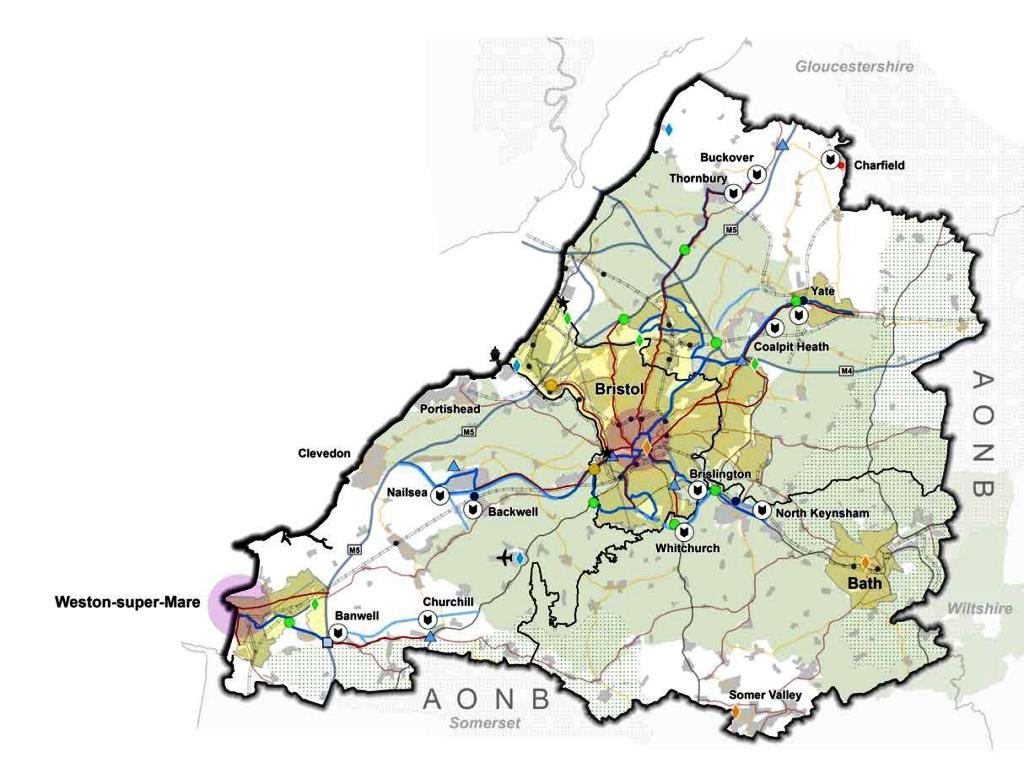The Joint Spatial Plan for the West of England sub-region sets out plans to 2036 for housing growth and new employment locations, and also the infrastructure that will be required to support it. The latest round of consultation ended on 10th January, ahead of an assessment by a planning inspector later in 2018. Responses at this stage were required to focus on legal compliance, soundness and co-operation.
Bristol Civic Society is a member of the Sustainable Transport Network, and supports STN’s comments on the JSP, which cites unsoundness for the following reasons:
- Too much weight has been given to protection of the Green Belt. The Plan’s choice of Strategic Development Locations (SDLs) strikes a sub-optimal balance between the twin aims of protecting the Green Belt and reducing the need to travel by non-sustainable transport modes. What is needed is a systematic review of the Green Belt.
- Some locations have been chosen to help justify the case for upgrading the transport infrastructure, which does not follow from the JSP’s strategic priorities. The expenditure on transport infrastructure, particularly roads, is more than it would need to be to support a more sustainable choice of SDLs.
- The match between the development areas and employment locations has not been demonstrated. The JSP contains no analysis to demonstrate that the match between the development areas and employment location minimises the need to travel as much as it could do.
- There is no commitment to transport project sequencing and prioritisation to align with strategic development plans, nor a mechanism for reviewing the SDLs should the feasibility or projected effectiveness of the transport schemes change.
Alan Morris

